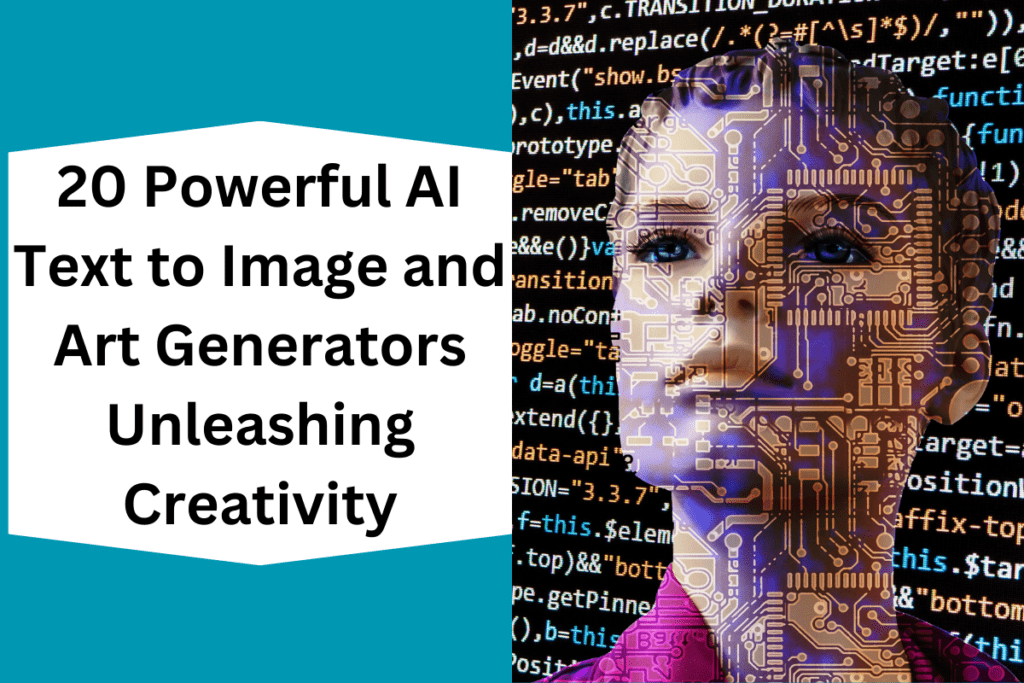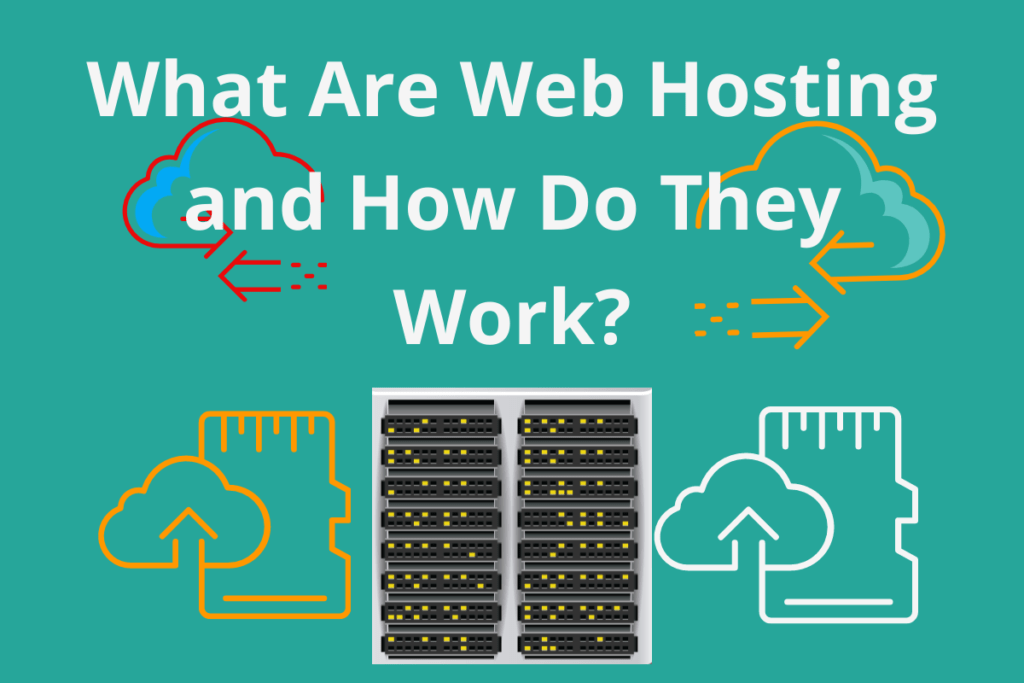These tools not only amplify and improve individual creativity, but they also encourage a culture of communal creation through collaborative platforms. As we go deeper into the area of AI picture and art production, it becomes clear that the synergy between human creativity and AI technology is influencing the future of visual expression. Join us on this adventure as we uncover the huge potential of these 20 strong AI tools and see how they are altering the bounds of art.
Artificial Intelligence (AI) has transformed various aspects of our lives, and the realm of art and image editing is no exception. AI image and art generators and editors are groundbreaking tools that leverage the power of machine learning algorithms to create, manipulate, and enhance images, unlocking a world of possibilities for artists, designers, and enthusiasts alike.
These sophisticated systems employ deep learning techniques to analyze and understand the patterns, styles, and content of vast datasets of images. By learning from these datasets, AI algorithms can generate entirely new images, imitate various artistic styles, or assist in editing and enhancing existing images.
AI image generators employ generative adversarial networks (GANs) to produce novel, realistic images that may be indistinguishable from those created by human artists. These systems can generate breathtaking landscapes, imaginative creatures, and stunning portraits, pushing the boundaries of human creativity. Additionally, AI art generators can mimic the artistic styles of renowned painters, allowing users to create digital artworks inspired by masters such as Van Gogh or Picasso.
Furthermore, AI image editors offer a range of powerful tools for enhancing and manipulating images. These editors can automatically remove unwanted objects, enhance colors and lighting, apply artistic filters, and even alter the composition of a scene. With AI-powered image editing, complex tasks that once required extensive manual effort can now be accomplished with a few clicks, empowering users to achieve professional-looking results effortlessly.
The impact of AI image and art generators and editors extends beyond the artistic realm. They find practical applications in various industries, including advertising, entertainment, fashion, and e-commerce. For example, AI-generated product images can facilitate virtual try-on experiences for customers, while AI-powered design tools can help architects visualize their concepts in three dimensions.
However, alongside their immense potential, AI image and art generators also raise questions about the nature of art, the role of human creativity, and ethical considerations surrounding the use of AI-generated content.
In this article, we delve into the fascinating world of AI image and art generators and editors. We will look at some of the most prominent AI picture generators and editors, their features, and how they can be utilised to produce distinctive and captivating graphics. Whether you’re an expert artist or just starting started with picture editing, AI can help you discover exciting new ways to increase your creativity. So, let’s get started and investigate the interesting world of AI picture creators and editors!
- 1. DALL-E 2
- 2. Stable Diffusion
- 3. Midjourney
- 4. Neural.love
- 5. This Beach Does Not Exist
- 6. Imagen
- 7. Magic Eraser
- 8. Let’s Enhance
- 9. Playground AI
- 10. DreamStudio
- 11. Deep Dream Generator
- 13. Artbreeder
- 14. Wombo.art
- 15. RunwayML
- 16. OpenArt
- 17. Hotpot AI
- 18. Fotor
- 19. DeepAI
- 20. VEED’s AI Image Generator
- Final Thoughts
- Frequently Asked Questions (FAQs)
1. DALL-E 2

DALL·E 2 is an AI image generator developed by OpenAI that allows users to create art from textual input. It is a deep learning model that generates digital images from natural language descriptions called “prompts”. DALL·E 2 was launched in April 2022 and is available to the public for free with 50 credits to start. Users can create images by entering a text prompt on the OpenAI website, and the generated images can be previewed and downloaded with a watermark. DALL·E 2 is based on machine learning and uses a version of GPT-3 modified to generate images. It is a browser-based tool that also offers an API for developers to integrate the model into their own applications
Key features of DALL·E
2. Stable Diffusion
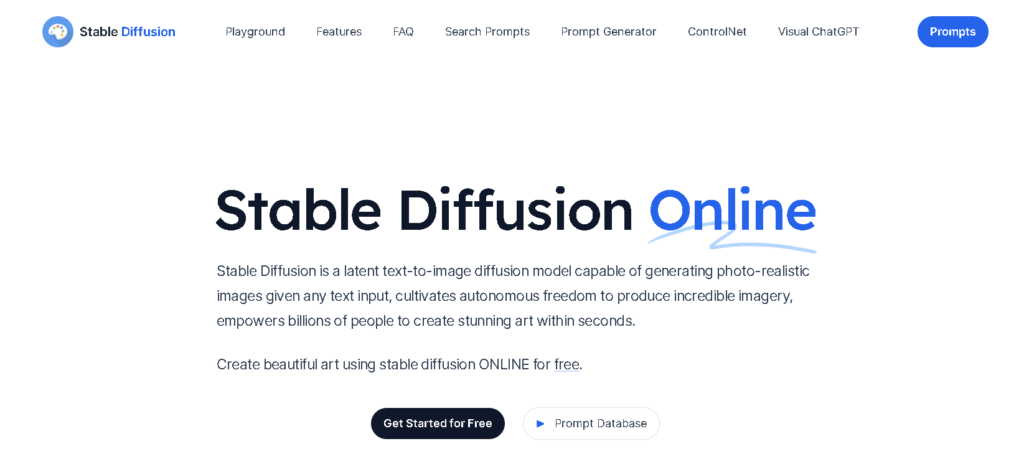
Stable Diffusion is a text-to-image model of deep learning that was released in 2022. It is a latent diffusion model that can generate high-quality, realistic images from natural language descriptions. Stable Diffusion is primarily used for generating detailed images conditioned on text descriptions, but it can also be applied to other tasks such as inpainting, out-painting, and generating image-to-image translations guided by a text prompt3. The model weights and code have been publicly released, and it can run on most consumer hardware equipped with a modest GPU with at least 8 GB VRAM. To speed up the image generation process, the Stable Diffusion paper runs the diffusion process not on the pixel images themselves, but on a representation of the images.
Key features of Stable Diffusion
3. Midjourney
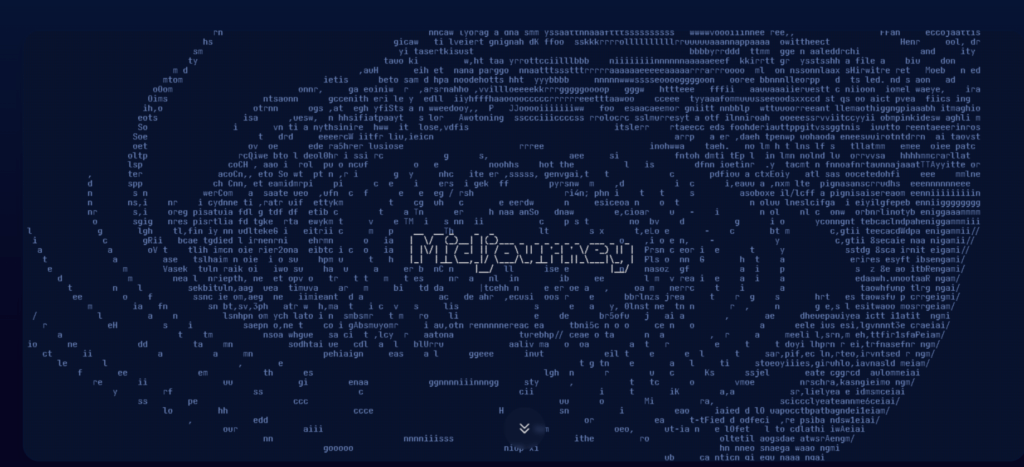
Midjourney AI is an artificial intelligence system that creates images from user prompts. It is a powerful tool for artistic image creation that does not require users to have a background in art or drawing. Midjourney uses a neural network to create art with text, allowing users to turn their fantasies into reality. Midjourney AI features include the ability to generate unique characters and images through the use of short text descriptions. Midjourney V4 has advanced functionality like image prompting and multi-prompts, and has more knowledge of creatures, places, and objects. To get the best results possible with Midjourney, it is recommended to be specific and detailed about what you want with your prompt, use strong and evocative words, and specific quantities.
Key features of Midjourney
4. Neural.love
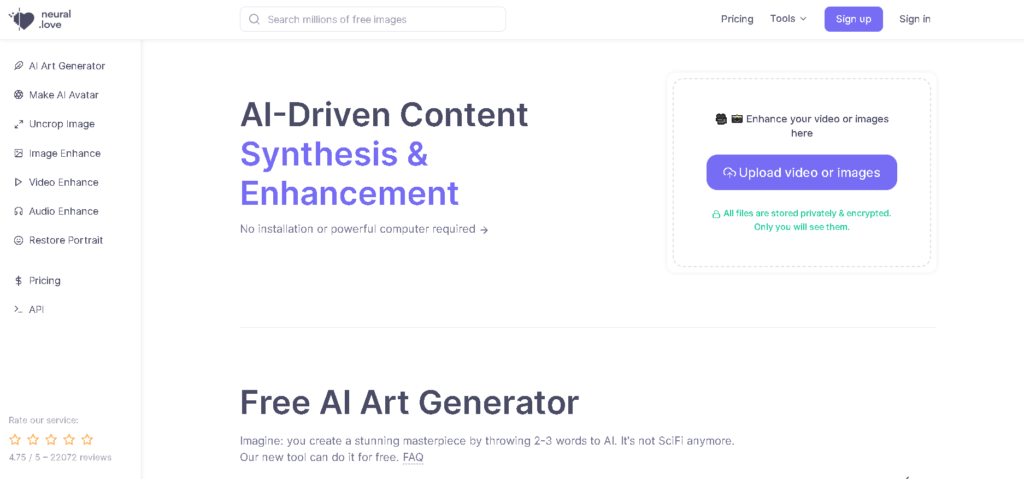
Neural.love is an AI image generator that uses machine learning technology to produce artistic images, avatars, and realistic portraits. It also assists in recreating artwork, and users can generate an endless supply of content by training a model via Dreambooth. The system uses a deep learning approach to generate images based on text inputs, with a focus on capturing the essence of love and intimacy. Neural.love offers a free AI Image Generator and AI Enhance, which can be used to restyle images, generate portraits, and create AI-generated avatars. The company’s goal is to close the AI-human communication gap by making AI more approachable and reliable through innovation and responsibility. The team of machine learning enthusiasts provides bespoke enhancement services using a custom-built pipeline of neural networks.
Key features of Neural.love:
5. This Beach Does Not Exist
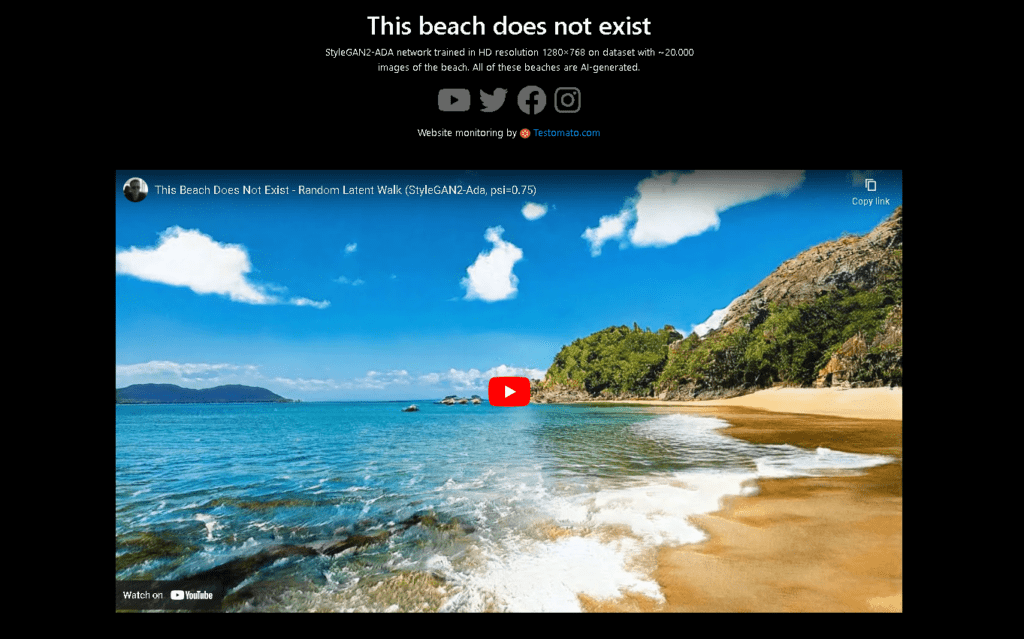
ThisBeachDoesNotExist generates synthetic images of beaches using a neural network called StyleGAN2-ADA. The network was trained on a dataset of approximately 20,000 beach images, and the generated images are in high definition resolution. StyleGAN is a generative adversarial network (GAN), a form of neural network trained on a sizable dataset of real photographs. The network is trained in HD resolution 1280×768. The algorithm behind it tries to recreate the real images as best as possible, while the discriminator learns to differentiate between faked and real images. ThisBeachDoesNotExist works by using a GAN to generate new images of beaches that do not exist in reality. The website allows users to generate endless images of beaches that do not exist in reality.
Key Features of This Beach Does Not Exist:
6. Imagen

Imagen is a text-to-image diffusion model developed by Google that generates photorealistic images of a scene given a brief textual description of it. It is part of a growing list of AI text-to-image generators. There is also a photo editing assistant called Imagen that analyzes previous photo edits to create a personalized AI profile. Recently, Google’s AI image model Imagen has been used to create sample buildings and plots.
Key features of Imagen:
7. Magic Eraser
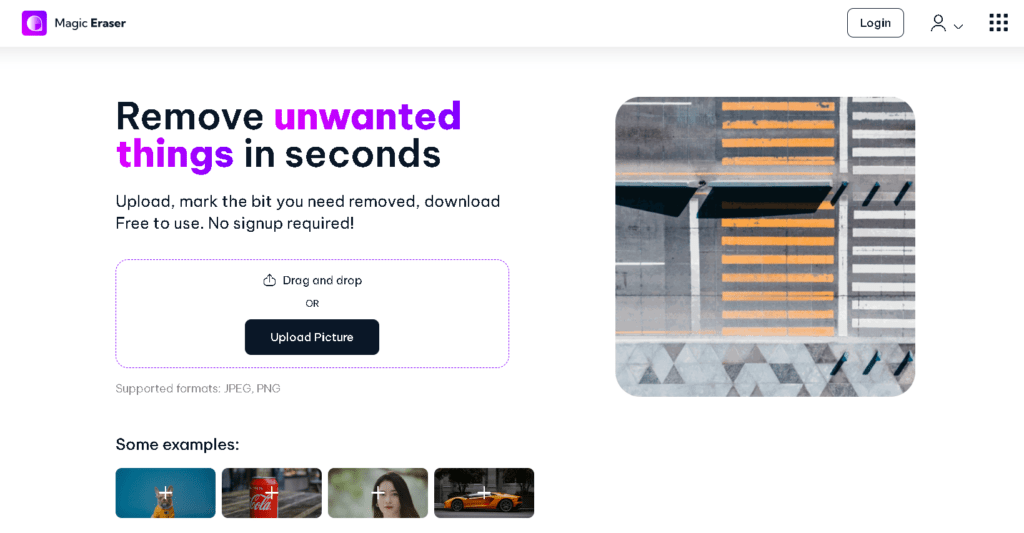
Magic Eraser AI is a free AI tool that can remove unwanted things in images in just a few seconds. To use Magic Eraser, you need to upload a picture and mark the bit you need to remove. The object will be deleted from the image once you’re finished, and you can save the altered version. Magic Eraser uses AI to detect distractions in photos, such as photobombers or power lines, and remove them with just a few taps. The tool automatically tries to find unwanted objects, and if it identifies what you like to remove, you can tap “Erase all” to remove highlighted objects.
Key Features of Magic Eraser:
8. Let’s Enhance

Let’s Enhance is an AI-powered image upscaler and fixer that uses Super Resolution technology based on Deep Convolutional Neural Networks. It is capable of enhancing the quality of photos for personal use, internet marketplaces, or printing. The process of upscaling a photo on Let’s Enhance is simple and quick. Users upload the photo, choose the upscale size, and let the AI handle the rest. The AI software automates the monotonous process of upscaling photos, which can take hours of work if done manually. Let’s Enhance offers presets that optimize website images for various industries, including real estate and eCommerce. With the ability to process a specific number of photographs each month, the service provides both free and paid subscriptions. Let’s Enhance is effective at upscaling various types of photos, including people, landscapes, and food.
Key features of Let’s Enhance
9. Playground AI
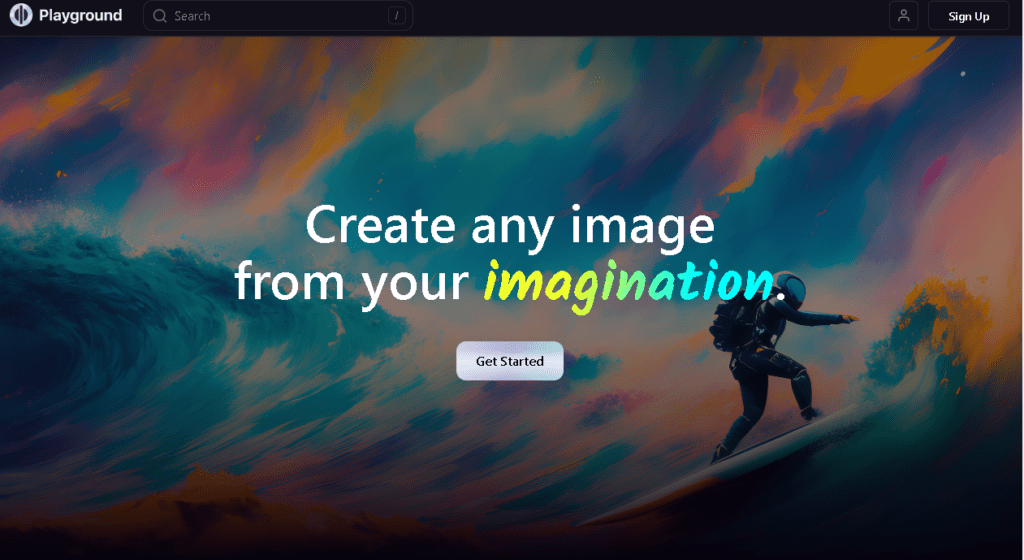
Playground AI is a free online AI picture creation that allows users to produce AI-generated art, social media posts, presentations, posters, films, and logos, among other things. It offers free Dall-E2 image generation, automated art style prompts, free image upscaling, image saving on the cloud, and social media for AI-generated images. It provides more control over image generation AI and allows the use of DALLE-2, Stable Diffusion 1.5 & 2.0 along with Playground’s filters to get the desired output. With the ability to generate up to 1000 images per day for free, Playground AI is a leading platform in the text-to-image generation space. The platform offers infinite potential to the artist in terms of the image details, aesthetics, styles, and moods they can choose for their intended work.
Key features of Playground AI:
10. DreamStudio

DreamStudio is an AI system that uses Stable Diffusion technology to create realistic images, art, and animation from a description in natural language. It is a web-based programme that anyone may use to create graphics from text. The system is powered by a new depth-guided stable diffusion mode that is conditioned on monocular depth estimates inferred via MiDaS. DreamStudio can create a variety of images, including cosmic swirls of stars and galaxies. DreamStudio AI allows users to create realistic paintings and drawings using only text. The tool has numerous configuration options available, including sliders that can be adjusted to change the resulting design. Users can also upload an image file as foundation art. DreamStudio AI uses natural language processing and input controls to allow users to express their limitless imagination.
Key features of DreamStudio
11. Deep Dream Generator

Deep Dream Generator is an online platform that combines AI technology and art to create images. It uses a convolutional neural network to find and enhance patterns in images. Users can input photos into the program and transform them through an algorithm to create unique and often surreal images. The platform also has a social media aspect, allowing users to share their creations with a community of artists and explorers1. Deep Dream Generator has been reviewed positively as a tool for creating AI art.
Key features of Deep Dream Generator:
13. Artbreeder
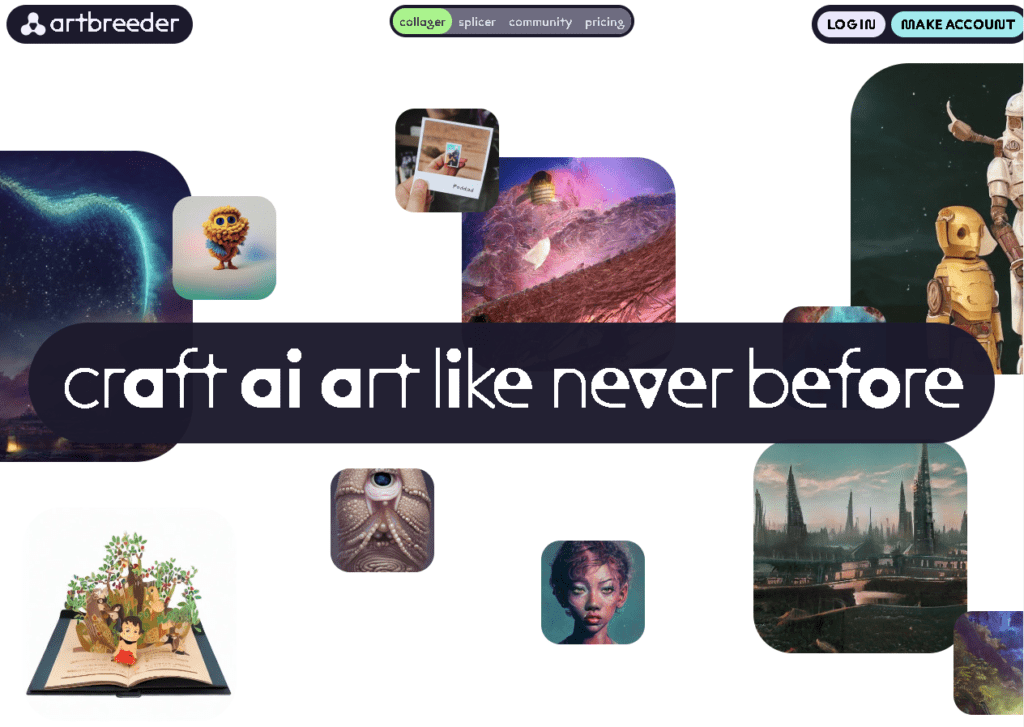
Artbreeder is a website that uses machine learning to create art. It allows users to remix any image they see to make it their own and collaborate with others. The website uses models called StyleGAN and BigGAN to generate new images based on the user’s input. Artbreeder can be used to create portraits, landscapes, and other types of images. It is a tool that combines creativity and technology to enable users to rapidly create artwork. Artbreeder is an example of how artificial intelligence is changing our perception of art and enabling new forms of artistic expression.
Key features of Artbreeder:
14. Wombo.art
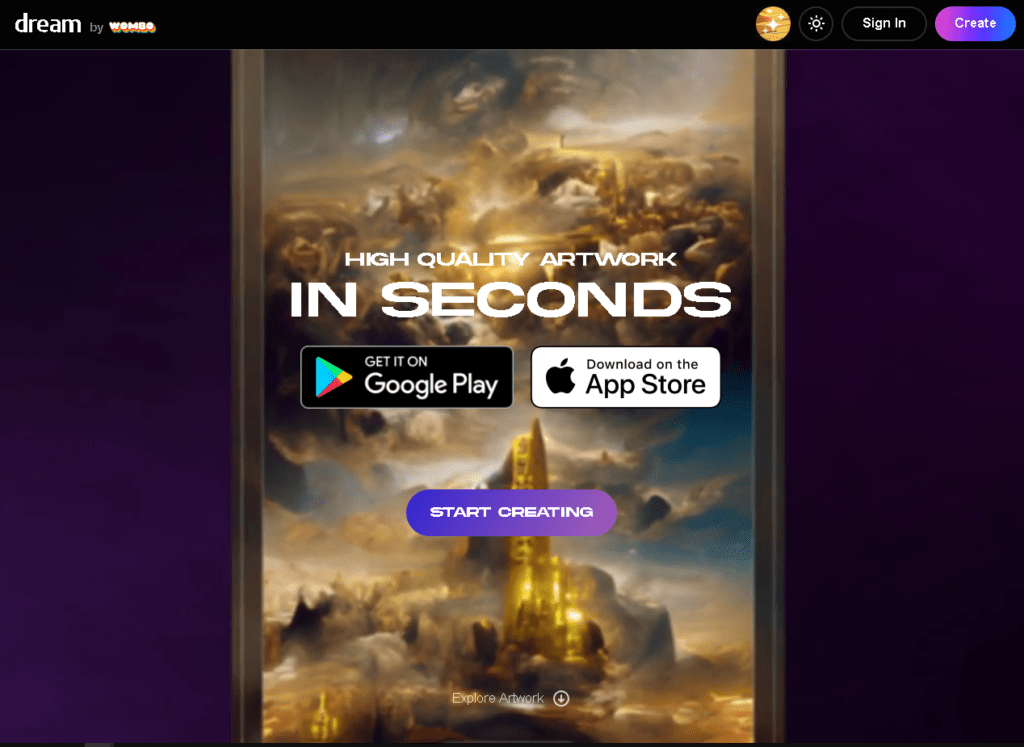
WOMBO’s Dream app is an AI-powered art generator that allows users to create digital artworks by entering a question and picking an art style. The software employs cutting-edge AI technology to transform any text into a gorgeous visual in seconds. WOMBO’s Dream is intended to empower everyone’s creative potential and power next-generation media that will make people laugh and smile. The software has been utilised for viral games as well as directed initiatives.
Key features of Wombo.art:
15. RunwayML

RunwayML AI Image and Art Generator and Editor is a platform that enables users to generate and change images with the help of AI Magic Tools. Users may use the Image to Image tool to upload an image and edit it by changing the style, changing the subject, or creating a new mood. Users can also add a prompt to describe the image and customise it further with advanced options. Text to Image, Erase and Replace, and Image to Image are among the AI Magic Tools available on the platform. RunwayML was developed by artists with the goal of bringing AI’s limitless creative potential to everyone. The portal also provides AI Training courses to assist users in learning the fundamentals of AI Training and creating creative art styles.
Key features of RunwayML:
16. OpenArt
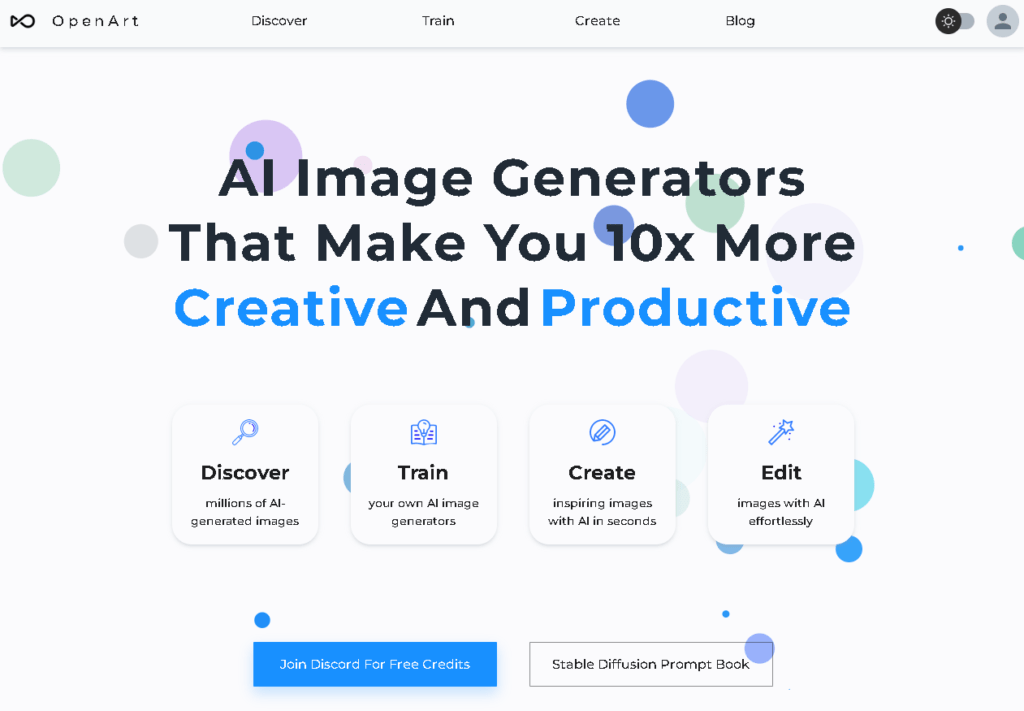
OpenArt is an image-generation platform powered by AI. It was established in 2022 and is headquartered in San Francisco, California. Users may look through and search for art and prompts from DALLE 2, Midjourney, and Stable Diffusion, as well as create images from text prompts. OpenArt is an AI-native social network that uses generative AI to provide a new paradigm and tools for expression and pleasure. The platform of the firm allows for art viewing, picture production from text prompts, and participation in art contests, allowing AI artists and aficionados to develop an AI art portfolio. Users receive 1000 free credits when they sign up, and they may earn daily free credits by joining the Discord community.
Key Features of OpenArt
17. Hotpot AI
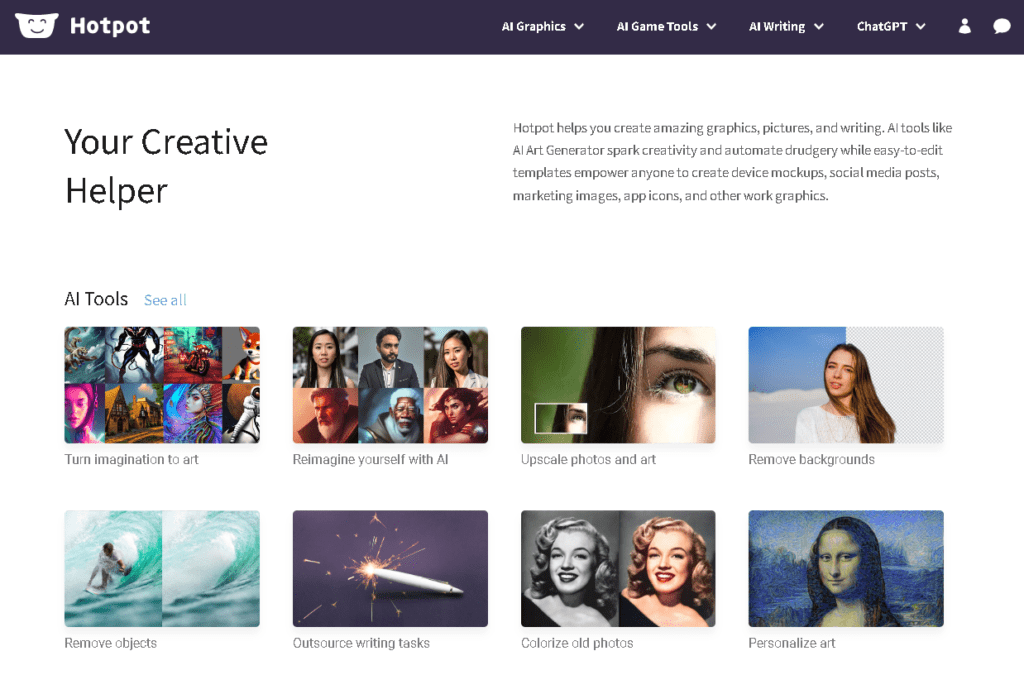
Hotpot AI is an online platform that provides a collection of AI tools to assist users in creating and editing photos, text, and other content. The AI Art Generator is one of the platform’s most popular products, allowing users to convert their imagination into art by merely typing in a few phrases. The application analyses the text and generates corresponding artwork in a style selected or generated by the user. Other AI products available from Hotpot AI include AI Headshot Generator, AI Stock Photos, AI Photo Upscaler, AI Copywriter, and AI Art Personalizer. The platform’s goal is to make graphic design, image editing, and media production more accessible and cheap to all users. Hotpot AI is a premium platform, and users must contact Hotpot to gain access to the API.
Key features of Hotpot AI:
18. Fotor

Fotor Text to Image with AI Image Generator is a programme that uses artificial intelligence to turn text prompts into pictures. Users can enter a word prompt into the generator and then select from a collection of relevant images created by the AI. Fotor’s AI picture generator can generate a variety of images, such as realistic face shots, 3D and anime figures, paintings, backdrops, and other sorts of digital AI art. The tool is simple to use and suited for both skilled and inexperienced artists. Fotor also has an AI Art Generator, which can convert text or photographs into magnificent AI art in seconds and gives a range of art styles to pick from.
Key features of Fotor
19. DeepAI
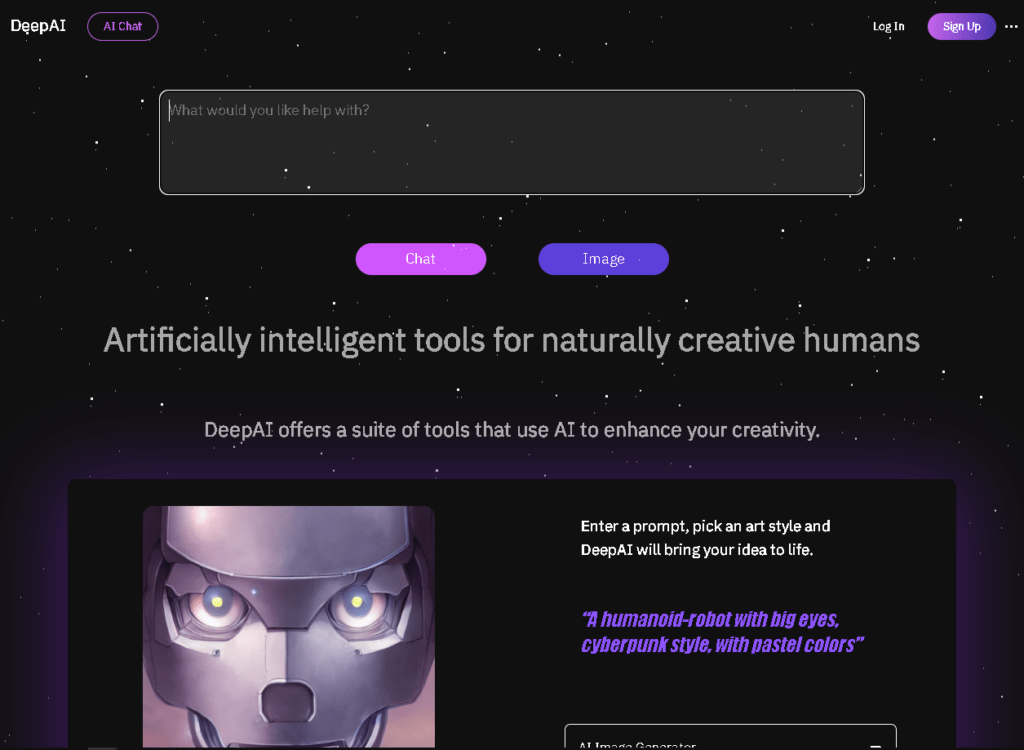
DeepAI is an online platform that generates artwork using deep learning algorithms. It provides a set of tools that leverage AI to boost creativity. The AI Image and Art Generator is one of its products, and it allows users to submit a question, select an art style, and produce an image in seconds. Users may quickly change photographs by typing basic commands like “make them blonde,” “add a volcano to the background,” or “make them wear a crown.” DeepAI includes a huge style library from which customers can choose a style that best matches their idea. The AI Image and Art Generator is free to use, but users may upgrade to a subscription account to have access to more styles and utilise the API. DeepAI is mostly an AI API for developers, but their website includes a free text-to-image art generator to demonstrate what it can achieve.
Key features of DeepAI
20. VEED’s AI Image Generator
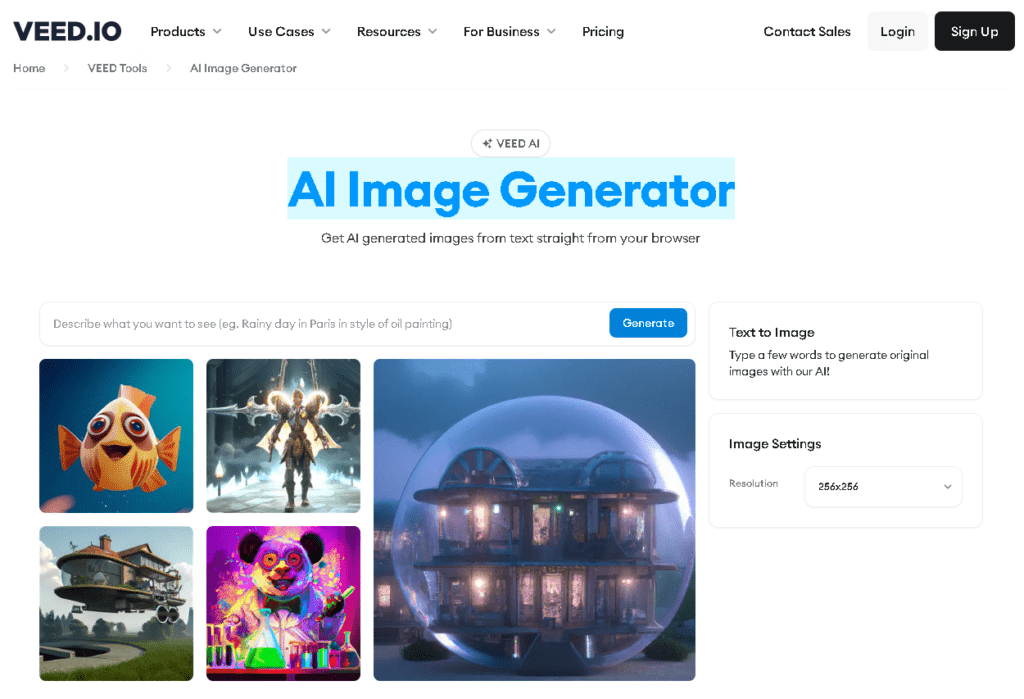
VEED’s AI Image Generator is a free online tool that allows users to generate original images from text prompts using AI. Users can type a few words and watch an AI-generated image appear on their screen. The AI can keep refining the prompts until the desired art style is achieved. VEED’s AI Image Generator works straight from the browser, so there is no need to download or install an app. It is free to use, and no credit card or subscription is required. Once the image is generated, it can be used for social media or other art projects. VEED’s AI Image Generator also allows users to create videos from the images they have created using VEED’s free built-in video editor, eliminating the need for a third-party app.
VEED’s AI Image Generator works by taking a few words as input and generating original images with AI. The AI can keep refining the prompts until the desired art style is achieved. VEED’s AI Image Generator works straight from the browser, so there is no need to download or install an app. It is free to use, and no credit card or subscription is required. Once the image is generated, it can be used for social media or other art projects. VEED’s AI Image Generator also allows users to create videos from the images they have created using VEED’s free built-in video editor, eliminating the need for a third-party app
Key features of VEED’s AI Image Generator
Final Thoughts
It is amazing to see how AI technology has revolutionized the field of image and art generators and editors, providing new opportunities for creativity. The 20 powerful technologies mentioned in the article showcase the capabilities of AI algorithms, neural networks, and deep learning models in transforming regular images into intriguing visual experiences.
These tools offer a wide range of functions, from creating dream-like pictures to applying creative styles and exploring new horizons. They provide a platform for experimenting with creativity, making them accessible to a wider audience without requiring extensive technical knowledge.
Moreover, the collaborative nature of some of these technologies encourages artistic groups to come together, fostering a culture of community creativity. Artists can collaborate to create new styles and push the boundaries of traditional art genres.
It’s important to note that AI technology is not meant to replace human brilliance but rather serve as useful assistants, enhancing artistic expression. The real magic happens when human ingenuity is combined with AI capabilities.
As AI image and art generators continue to advance, the possibilities for creative expression are endless. The convergence of human creativity and AI technology offers a future in which new aesthetics are created and creative limits are pushed.
Overall, the 20 AI image and art generators and editors mentioned in the article are just a small sample of the enormous potential of AI in the creative domain. With these powerful tools at their disposal, artists can explore new artistic horizons and create compelling combinations of human genius and AI invention.
Frequently Asked Questions (FAQs)
Before we wrap up, let’s answer some of your most common questions regarding AI art generators. Did we miss one? Leave a question below and we will respond!
| Which AI art generator is the best? |
| The ideal AI art generator is a matter of opinion and subject to change. There are various AI art generators available that can produce a wide range of creative styles. DeepArt.io, Deep Dream Generator, and RunwayML are a few examples. It is advisable to explore and test out many AI art generators before settling on one. |
| Is there a free AI art generator? |
| Yes, there are freely accessible AI art generators. You may make AI-generated art without spending any money thanks to the many AI art platforms that provide you free access to their fundamental capabilities. However, certain premium or advanced features could need a paid membership or purchase. |
| What are the prices of AI art generators? |
| AI art generators can range in price. While some AI art platforms let users access basic functions for free, others only let users access advanced features via costly membership plans or one-time purchases. The cost is determined on the features and the particular AI art generator. Before making a choice, it’s crucial to review the price information on the platform’s website or app store. |
| Can you sell art created by AI? |
| Yes, AI-generated art may be sold, but there are a few things to keep in mind. Artwork produced by AI may have significant ownership and copyright issues. To understand the rights and permissions related to the art made by an AI art generator, you should check its terms of service or speak with legal professionals. There may be unique rules for selling AI-generated art on some marketplaces for AI art. |
| Who owns AI-generated art? |
| The ownership of AI-generated art can be a bit tricky. Generally, the person who creates the AI art generator owns the software and the algorithms used to generate the art. However, the person who operates the AI art generator may not necessarily own the rights to the individual artworks created by the AI. Ownership rights can vary depending on the terms of service or agreements between the user and the AI art platform. It’s important to review these terms or seek legal advice to understand the ownership rights involved. |
| Can you use AI-generated art commercially? |
| Using AI-generated art commercially depends on the permissions and licenses associated with the specific AI art generator and the artwork itself. Some AI art platforms may have specific guidelines or licenses for commercial use. It’s crucial to review the terms of service, licensing agreements, or consult with legal professionals to ensure you have the necessary rights to use the AI-generated art commercially. |
| How do AI art generators work? |
| AI art generators use complex algorithms and machine learning techniques to analyze and learn from existing artworks. They then generate new images based on this learned information. These algorithms can mimic different artistic styles or combine elements from multiple styles. AI art generators often use neural networks, a type of artificial intelligence model inspired by the human brain, to process and create new images. Users input their desired parameters, such as style or subject matter, and the AI generates the corresponding artwork based on its learned knowledge. |
| Is it ethical to use AI art? |
| The ethics of using AI art is a subject of ongoing discussion. Some people believe that using AI to create art is a form of creativity and innovation, while others express concerns about issues like the originality of the art or the potential loss of human artistic expression. It’s important to be mindful of the potential impact on artists, acknowledge the limitations of AI, and respect copyright and ownership rights when using AI-generated art. |
| Which AI creates the most photo-realistic images? |
| There are several AI models that excel in creating photo-realistic images. One prominent example is the StyleGAN2 model, developed by NVIDIA. StyleGAN2 has been widely used to generate highly realistic images, including faces, landscapes, and objects. However, it’s worth noting that AI technology is rapidly advancing, and new models are being developed periodically. To identify the most photo-realistic picture generating models accessible at any given time, it’s always a good idea to remain up to date on the newest breakthroughs in AI technology. |
